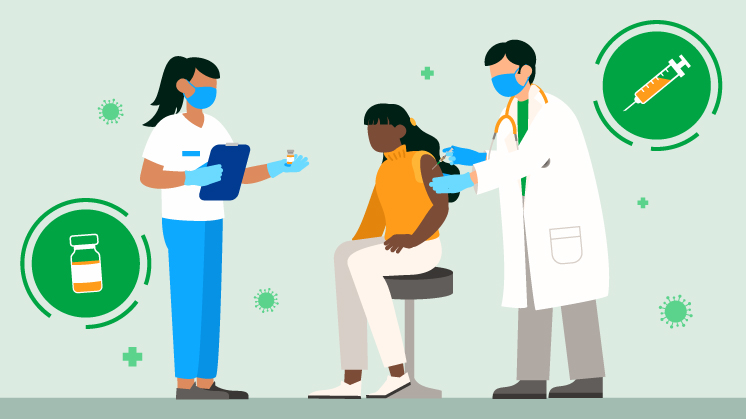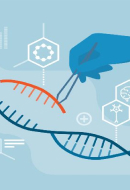The history of vaccines
The history of vaccines, crucial for combating disease
The outbreak of the COVID-19 pandemic led to record approval time for COVID-19 vaccines: less than a year. Since that year of lockdown, the World Health Organisation has approved several vaccines for diseases that, like COVID-19, have affected large numbers of people around the world, e.g. Ebola, polio, malaria, papillomavirus, and is in the process of approving a vaccine against monkeypox (Mpox). In view of its importance let's find out a little more about the history of this medical breakthrough that has saved millions of lives since it was discovered and will continue to do so in the future.

The scientific community has been working for years in the search for vaccines to protect us against diseases like malaria (which claims the lives of 400,000 people a year) and HIV.
However, he population also has to assume its own responsibility, and this is the fact is that climate change and loss of biodiversity are, according to the United Nations Environment Programme (UNEP), factors that multiply the danger of there being other, new pandemics in the future. Although population lockdowns reduced CO2 levels by 17%, now, a few years later, back to normal, a greater commitment is needed to reduce emissions.
What is a vaccine and what is it for
According to the World Health Organisation (WHO), a vaccine is any substance designed to create immunity against a disease by stimulating the production of antibodies. It may be, for example, a suspension of micro-organisms that are either dead or have been rendered harmless, or of products from, or derivatives of, micro-organisms. The usual method of delivering vaccines is by injection, although some are administered as a nasal spray or orally.
Vaccines are the most effective way of preventing millions of cases of sickness, disability and death. Thanks to vaccines, apart from eradicating smallpox — 2024 marked the 44th anniversary of this achievement — it has been possible to control other diseases such as rabies, cholera, tetanus, diphtheria, plague, tuberculosis, typhoid, polio, measles, mumps, rubella, meningitis, hepatitis A and B and flu. There are also vaccines against poisons, such as snake bites, and pollen and other allergens.
In recent years anti-vaccine movements have been gaining ground, which the World Health Organisation (WHO) defines as "a group of people who, for various reasons (health, religious, scientific, political or philosophical), believe that vaccines and the act of vaccination pose a greater risk to their health than the potential benefit they may bring".
In 2019, coinciding with the dramatic resurgence of measles around the world — with over 140,000 deaths — the WHO described this movement as one of the ten greatest threats to world health  . With the COVID-19 pandemic in 2020, its media presence increased considerably, sparking demonstrations in cities all over the world.
. With the COVID-19 pandemic in 2020, its media presence increased considerably, sparking demonstrations in cities all over the world.
The WHO explains that much of the mistrust surrounding COVID-19 vaccination had to do with the fact that it was the fastest developed vaccine in history and due to a massive lack of knowledge on the subject. This time of hesitancy and intense debate created a new challenge for health institutions to build trust in immunoprevention processes.
The origin and history of vaccines
According to an educational paper  published by the College of Physicians of Philadelphia, a venerable organisation founded in 1787, vaccination originated in China using a technique called variolation. This technique, which sought to prevent smallpox, involved pulverising the scabs of a mildly-infected person, for nasal inhalation by healthy people in order to immunise them. This practice is estimated to be over 1,000 years old, but it was first documented in accounts dating from the 16th century.
published by the College of Physicians of Philadelphia, a venerable organisation founded in 1787, vaccination originated in China using a technique called variolation. This technique, which sought to prevent smallpox, involved pulverising the scabs of a mildly-infected person, for nasal inhalation by healthy people in order to immunise them. This practice is estimated to be over 1,000 years old, but it was first documented in accounts dating from the 16th century.
The American Academy of Pediatrics considers the era of vaccines to have begun with the physician Edward Jenner. This British doctor observed that people who milked cows and contracted cowpox were protected against human smallpox. In 1796 he inoculated an eight-year-old child with fluid from cowpox pustules and when the child was subsequently injected with the human smallpox virus the child did not develop it and suffered no symptoms. In the 19th century the French physician Louis Pasteur developed the second generation of vaccines, including those against cholera and rabies, and introduced the term vaccine (from the latin vacca meaning cow) in recognition of Jenner's work with cows.
In 2019, the WHO approved the vaccine against Ebola, the fastest prequalification in the history of the organisation, due to the numerous outbreaks and countries at risk of the disease. The vaccine, which is called Ervebo and, according to a study carried out by Doctors without Borders from 2018 to 2020 in the Democratic Republic of Congo (a country where there is currently an active outbreak), can reduce mortality among those infected with the virus by up to half.
Monkeypox, a disease that usually occurs in African countries, was recently added to the WHO prequalification list, but cases were detected outside Africa in 2022 and August 2024.
Two vaccines exist to treat this disease, ACAM2000 and JYNNEOS, but they are not unique to monkeypox. They were developed to treat smallpox and can be used in these cases. The need to approve a vaccine exclusively for monkeypox began with the global outbreak of 2022 when more than 120 countries confirmed cases of the virus, and picked up speed when in 2024 the WHO declared the disease an international health emergency, following a 160% increase in cases from the same period the previous year and the emergence of a new variant.
From its beginnings to the present day, vaccines have allowed us to prevent dozens of infectious diseases. According to the WHO, the measles vaccine alone saved 23 million lives between 2000 and 2018, especially among children. It also points out that a suitable vaccination programme would make it possible to prevent 24 million people from descending into poverty in developing countries but, although immunisation by vaccination prevents between 2 and 3 million deaths a year, 21 million infants in the world have no access to basic vaccinations  .
.
Vaccines are powerful, effective and cheap weapons in the fight against sickness, death and poverty. The WHO created the Immunization Agenda 2030 to immunise and improve the lives of all people in all countries, with the collaboration of national and international organisations, so that the methods and mechanisms used are adapted to the needs of each destination.
The history of vaccines in the last century
- 1921
- 1923
- 1926
- 1935
- 1938
- 1952
- 1954
- 1963
- 1967
- 1969
- 1974
- 1981
- 1984
- 1991
- 1998
- 2006
- 2009
- 2012
- 2019
- 2020
Source: Nature, CDC, WHO.
 SEE INFOGRAPHIC: The history of vaccines in the last century [PDF]
SEE INFOGRAPHIC: The history of vaccines in the last century [PDF]
Types of vaccine
The United States Department of Health & Human Services (HHS) divides vaccines into four types:
Live-attenuated vaccines
These use a weakened (or attenuated) form of the germ that causes the disease. Because these vaccines are so similar to the natural infection that they help prevent, they create a strong and long-lasting immune response. Just 1 or 2 doses of most live vaccines can give a lifetime of protection against a germ and the disease it causes. They protect against measles, mumps, rubella, smallpox, chickenpox and yellow fever.
Inactivated vaccines
These use the killed version of the germ that causes a disease and they usually do not provide immunity (protection) that is as strong as live vaccines. So, several doses may be necessary over time (booster shots) in order to have ongoing immunity against a disease. They protect against hepatitis A, flu (injected vaccine only), polio (injected vaccine only) and rabies.
Subunit, recombinant, polysaccharide, and conjugate vaccines
These use specific pieces of the germ, such as its protein, sugar, or capsid (a casing around the germ), and give a very strong immune response. They can also be used on almost anyone who needs them, including people with weakened immune systems and long-term health problems. The only limitation is that booster shots are often needed. They protect against hepatitis B, HPV (Human papillomavirus), and whooping cough, among others.
Toxoid vaccines
These use a toxin (harmful product) made from the germ that causes the disease. They create immunity to the parts of the germ that cause the disease rather than the germ itself, so the immune response is targeted to the toxin. Booster shots may be needed to give ongoing protection. They are used to protect against diphtheria and tetanus.

SDG 3: Good health and well-being
One of the goals within SDG 3 seeks to end epidemics and infectious and non-infection diseases through prevention and treatment.

CRISPR: the great genetic revolution
In 2015, CRISPRs, were considered the biggest scientific breakthrough of the year

Mental hygiene
Mental health is an integral part of health; indeed, there is no health without mental health.

Ageism
One in two people in the world discriminate against the elderly.
























